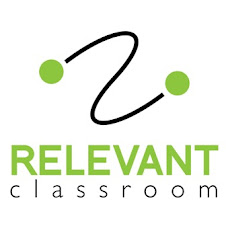 Have you ever heard someone say, “Let me give you a little context.” Setting context is something we do on a daily basis as we engage in conversations with others. You tell a little of the background or at least express where you are headed in the conversation. It gives us mental pegs to understand where a conversation is coming from or where it is headed. How do you “set context” to prime students in your classroom? Here are a few tips for setting context effectively:
Have you ever heard someone say, “Let me give you a little context.” Setting context is something we do on a daily basis as we engage in conversations with others. You tell a little of the background or at least express where you are headed in the conversation. It gives us mental pegs to understand where a conversation is coming from or where it is headed. How do you “set context” to prime students in your classroom? Here are a few tips for setting context effectively:
Setting context in a learning environment means that we put a “frame” around the learning event at hand. Just like a frame around a painting helps to focus our attention on the picture, setting context is a way of focusing student attention on what you want them to notice and/or do during the learning event without giving away the “punch line.” As you set context let students know what they should be thinking, feeling, and/or doing with their body to achieve the desired result. Remember this, if you don’t set context – they will! When they set the context, they may not focus their attention on the same things you hoped they would. The end result? You have to go back and re-explain what they “should have noticed.” Here are some examples of what “setting context” might sound like:
- In this short video you’ll see the photosynthesis process come to life. We’ve studied the process, now let’s see how the process works in the real-world. Grab a pen and your notes on the process. Follow-along in the video and when you notice a step in the process is complete, check if off in your notebook. After we finish the video you will use the examples to answer a few questions on a quick quiz – sit up, lean in and let’s get started.
- As you complete the scenario provided pay close attention to what it takes to be successful.
- Think about a time when you struggled to bring a group of people together to accomplish a goal. Jot that experience down on a sticky-note and keep it nearby. The next few moments will reveal two fail-proof strategies for rallying people around a common goal. As you listen to the strategies think about how you could have employed them in your own situation. Be prepared to respond with your example.

No comments:
Post a Comment